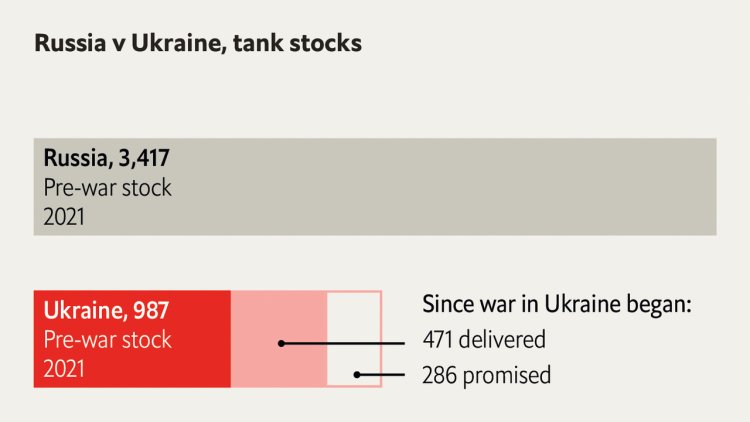Could Ukraine’s allies be sending it more weapons?
Data from satellites suggest violence has surged in much of SudanThroughout the south and in the capital, the number of fires detected from space is abnormally highTHE WEST has committed enduring support for Ukraine: at this month’s NATO summit, G7 countries pledged to build up Ukrainian armed forces with air defence, artillery and other heavy equipment over the long term. On July 18th Ukraine’s allies wrapped up a meeting that focused, in part, on ramping up the production of munitions in the shorter term. These talks come amid concerns that allies are struggling to keep up with Ukraine’s needs. Analysis from the Kiel Institute for the World Economy, a German think-tank, shows the scale of the challenge. The researchers added together Ukraine’s estimated pre-war munitions stocks and foreign commitments made between January 24th 2022 and May 31st 2023. They then compared these figures with Russia’s estimated pre-war stocks to show the disparities between the countries’ arsenals. Their


Data from satellites suggest violence has surged in much of Sudan
Throughout the south and in the capital, the number of fires detected from space is abnormally high
THE WEST has committed enduring support for Ukraine: at this month’s NATO summit, G7 countries pledged to build up Ukrainian armed forces with air defence, artillery and other heavy equipment over the long term. On July 18th Ukraine’s allies wrapped up a meeting that focused, in part, on ramping up the production of munitions in the shorter term. These talks come amid concerns that allies are struggling to keep up with Ukraine’s needs.
Analysis from the Kiel Institute for the World Economy, a German think-tank, shows the scale of the challenge. The researchers added together Ukraine’s estimated pre-war munitions stocks and foreign commitments made between January 24th 2022 and May 31st 2023. They then compared these figures with Russia’s estimated pre-war stocks to show the disparities between the countries’ arsenals. Their calculations suggest that, even with all the Western donations, Russia’s stockpiles of heavy weaponry dwarf Ukraine’s (see chart 1).
For instance, Russia had 3,417 tanks before the war; Ukraine had 987, with its allies delivering a further 471 and pledging 286. When those numbers, which include pledges yet to be fulfilled, are tallied, Ukraine’s total is just over half Russia’s starting figure. The gulf in stocks of other heavy weapons, like howitzers and Multiple Launch Rocket Systems (MLRS), is similarly wide. The disparity makes the resilience of Ukraine’s forces all the more remarkable.
These crude sums do not account for the weapons each side has lost in the fighting (some estimates suggest that Russia lost around 40% of its tanks in the first nine months of the war). Nor do they reflect the quality of the equipment in question: the modern Western weapons being donated are far superior to the Soviet-era kit that made up the bulk of Russia’s and Ukraine’s pre-war arsenals. Yet the numbers do show the raw disparity between the two sides.
Could Ukraine’s allies do more? The heavy weapons they have given and promised represent just a small portion of the West’s collective arsenal. The Kiel Institute suggests that NATO and European Union members delivered or pledged about 5% of their joint stock of tanks and MLRS by May 31st, and 8% of their 155mm and 152mm howitzers (see chart 2). But Western countries do not buy or stock ordnance collectively: only about 18% of EU defence procurement is collaborative.
It is largely up to national governments to decide how much they can afford to give, balancing support for Ukraine with maintenance of their own stockpiles. The largest donor of heavy weapons to Ukraine is America, whose commitments until the end of May were worth some €8.6bn ($9.2bn), according to the Kiel Institute. However, smaller countries have given away much larger proportions of their stocks: the Czech Republic committed 58% of its heavy weapon stocks, compared with America’s 5%.
Ukraine needs big pieces of equipment like artillery systems less urgently than it needs the ammunition that they shoot. Having used many of its Soviet-made artillery shells, Ukraine is largely reliant on the West. But allies are struggling to keep up with demand: in February estimates suggested Ukraine was using between 6,000 and 7,000 artillery shells a day. At that time, America produced roughly 14,000 155mm shells per month; it has since increased its production rate to 24,000 shells and aims to reach 85,000 in five years. There is little point sending in the big guns if they have nothing to fire.■
What's Your Reaction?













